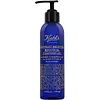What's inside
What's inside
 Key Ingredients
Key Ingredients

 Benefits
Benefits

 Concerns
Concerns

 Ingredients Side-by-side
Ingredients Side-by-side

Caprylic/Capric Triglyceride
MaskingPEG-40 Sorbitan Peroleate
EmulsifyingPrunus Armeniaca Kernel Oil
MaskingTocopherol
AntioxidantTocopheryl Acetate
AntioxidantAscorbyl Palmitate
AntioxidantCitrus Aurantium Dulcis Peel Oil
MaskingHelianthus Annuus Seed Oil
EmollientDicaprylyl Carbonate
EmollientBorago Officinalis Seed Oil
EmollientCitrus Paradisi Peel Oil
MaskingCitrus Nobilis Peel Oil
MaskingRosmarinus Officinalis Leaf Extract
AntimicrobialAleurites Moluccanus Seed Oil
Skin ConditioningCymbopogon Citratus Leaf Oil
MaskingLavandula Hybrida Oil
EmollientOryza Sativa Bran Oil
EmollientLavandula Angustifolia Oil
MaskingC12-15 Alkyl Benzoate
AntimicrobialCetyl Ethylhexanoate
EmollientCitral
PerfumingLimonene
PerfumingLinalool
PerfumingCaprylic/Capric Triglyceride, PEG-40 Sorbitan Peroleate, Prunus Armeniaca Kernel Oil, Tocopherol, Tocopheryl Acetate, Ascorbyl Palmitate, Citrus Aurantium Dulcis Peel Oil, Helianthus Annuus Seed Oil, Dicaprylyl Carbonate, Borago Officinalis Seed Oil, Citrus Paradisi Peel Oil, Citrus Nobilis Peel Oil, Rosmarinus Officinalis Leaf Extract, Aleurites Moluccanus Seed Oil, Cymbopogon Citratus Leaf Oil, Lavandula Hybrida Oil, Oryza Sativa Bran Oil, Lavandula Angustifolia Oil, C12-15 Alkyl Benzoate, Cetyl Ethylhexanoate, Citral, Limonene, Linalool
Ethylhexyl Palmitate
EmollientZea Mays Germ Oil
EmollientIsopropyl Myristate
EmollientCaprylic/Capric Triglyceride
MaskingPolyglyceryl-10 Dioleate
EmulsifyingPolyglyceryl-6 Dicaprate
EmulsifyingOenothera Biennis Oil
EmollientPolyglyceryl-2 Oleate
EmulsifyingSqualane
EmollientCoriandrum Sativum Seed Oil
EmollientPhenoxyethanol
PreservativeLavandula Angustifolia Oil
MaskingIsopropyl Lauroyl Sarcosinate
Skin ConditioningDicaprylyl Ether
EmollientDicaprylyl Carbonate
EmollientGeranium Maculatum Oil
MaskingRosmarinus Officinalis Leaf Oil
MaskingLinalool
PerfumingTocopherol
AntioxidantCitronellol
PerfumingGeraniol
PerfumingLimonene
PerfumingGlycine Soja Oil
EmollientGlyceryl Stearate Citrate
EmollientEthylhexyl Palmitate, Zea Mays Germ Oil, Isopropyl Myristate, Caprylic/Capric Triglyceride, Polyglyceryl-10 Dioleate, Polyglyceryl-6 Dicaprate, Oenothera Biennis Oil, Polyglyceryl-2 Oleate, Squalane, Coriandrum Sativum Seed Oil, Phenoxyethanol, Lavandula Angustifolia Oil, Isopropyl Lauroyl Sarcosinate, Dicaprylyl Ether, Dicaprylyl Carbonate, Geranium Maculatum Oil, Rosmarinus Officinalis Leaf Oil, Linalool, Tocopherol, Citronellol, Geraniol, Limonene, Glycine Soja Oil, Glyceryl Stearate Citrate
 Reviews
Reviews

Ingredients Explained
These ingredients are found in both products.
Ingredients higher up in an ingredient list are typically present in a larger amount.
This ingredient is an emollient, solvent, and texture enhancer. It is considered a skin-softener by helping the skin prevent moisture loss.
It helps thicken a product's formula and makes it easier to spread by dissolving clumping compounds.
Caprylic Triglyceride is made by combining glycerin with coconut oil, forming a clear liquid.
While there is an assumption Caprylic Triglyceride can clog pores due to it being derived from coconut oil, there is no research supporting this.
Learn more about Caprylic/Capric TriglycerideDicaprylyl Carbonate comes from carbonic acid and caprylyl alcohol, a fatty alcohol. It is an emollient and gives skin a velvet feel. The sources of Dicaprylyl Carbonate may be synthetic or from animals.
As an emollient, Dicaprylyl Carbonate creates a film on the skin. This film traps moisture in, keeping your skin soft and hydrated.
Lavandula Angustifolia Oil is more commonly known as lavender essential oil. It is considered a fragrancing ingredient.
Lavender imparts a famous scent. While the smell is lovely, this ingredient and may sensitize skin in topical products. This is because about 85% of the oil is made up of linalool and linalyl acetate.
When exposed to air, these two compounds become strong allergens. This ingredient exhibits cytotoxicity at low concentrations; amounts of 0.25% have been shown to damage skin cells.
A study from Japan found this ingredient caused lavender sensitivity after widespread exposure.
Lavender essential oil has some antimicrobial, antibacterial, and anti-inflammatory properties. However, the cons of this ingredient may outweight the pros.
More research is needed to confirm lavender essential oil's effects when used in aromatherapy.
Lavandula Angustifolia is known as the English Lavender and famous for creating purple fields in Provence, France.
Learn more about Lavandula Angustifolia OilLimonene is a fragrance that adds scent and taste to a formulation.
It's found in the peel oil of citrus fruits and other plants such as lavender and eucalyptus. The scent of limonene is generally described as "sweet citrus".
Limonene acts as an antioxidant, meaning it helps neutralize free radicals.
When exposed to air, oxidized limonene may sensitize the skin. Because of this, limonene is often avoided by people with sensitive skin.
The term 'fragrance' is not regulated in many countries. In many cases, it is up to the brand to define this term. For instance, many brands choose to label themselves as "fragrance-free" because they are not using synthetic fragrances. However, their products may still contain ingredients such as essential oils that are considered a fragrance.
Learn more about LimoneneLinalool is a fragrance and helps add scent to products. It's derived from common plants such as cinnamon, mint, citrus, and lavender.
Like Limonene, this ingredient oxidizes when exposed to air. Oxidized linalool can cause allergies and skin sensitivity.
This ingredient has a scent that is floral, spicy tropical, and citrus-like.
Learn more about LinaloolTocopherol (also known as Vitamin E) is a common antioxidant used to help protect the skin from free-radicals and strengthen the skin barrier. It's also fat soluble - this means our skin is great at absorbing it.
Vitamin E also helps keep your natural skin lipids healthy. Your lipid skin barrier naturally consists of lipids, ceramides, and fatty acids. Vitamin E offers extra protection for your skin’s lipid barrier, keeping your skin healthy and nourished.
Another benefit is a bit of UV protection. Vitamin E helps reduce the damage caused by UVB rays. (It should not replace your sunscreen). Combining it with Vitamin C can decrease sunburned cells and hyperpigmentation after UV exposure.
You might have noticed Vitamin E + C often paired together. This is because it is great at stabilizing Vitamin C. Using the two together helps increase the effectiveness of both ingredients.
There are often claims that Vitamin E can reduce/prevent scarring, but these claims haven't been confirmed by scientific research.
Learn more about Tocopherol